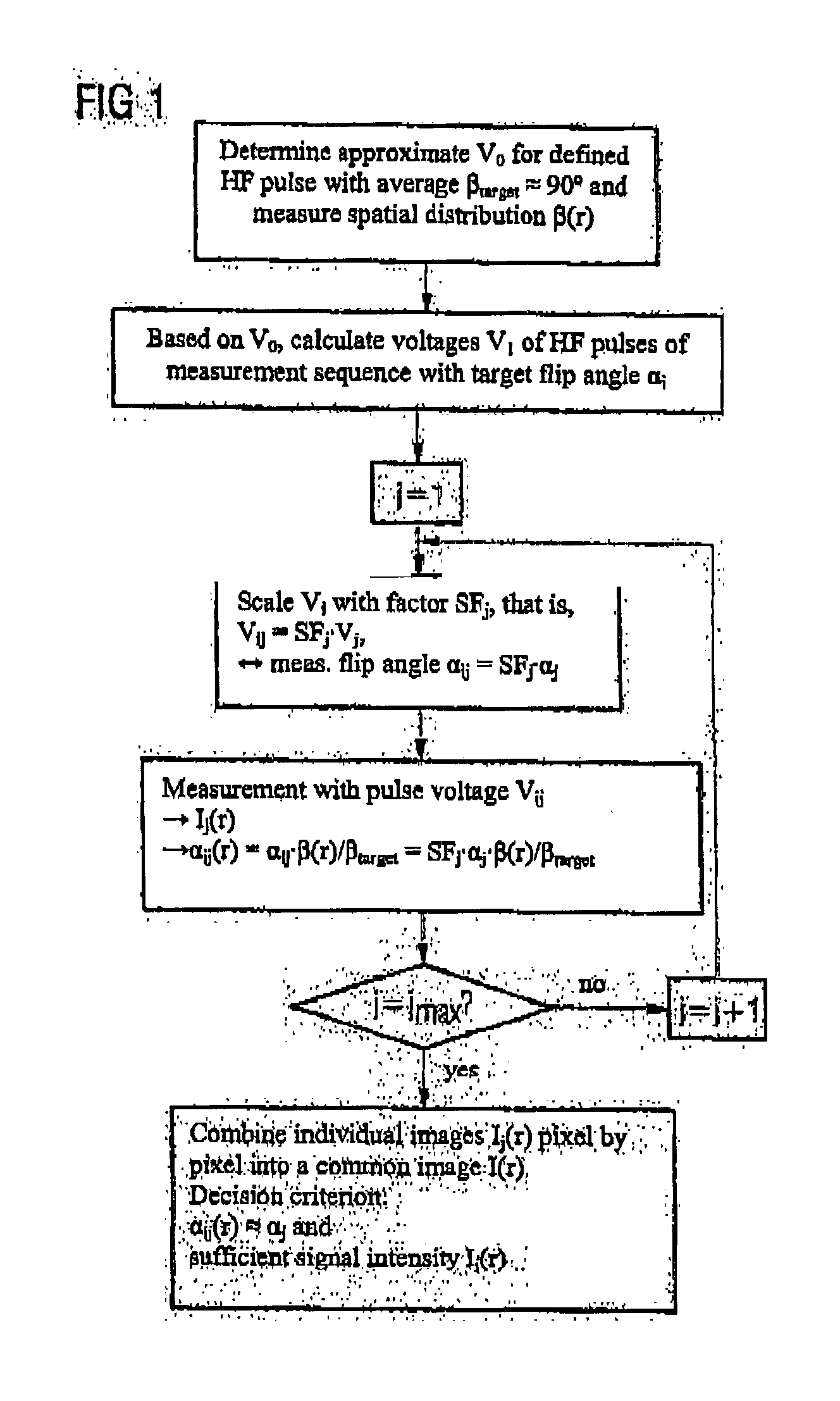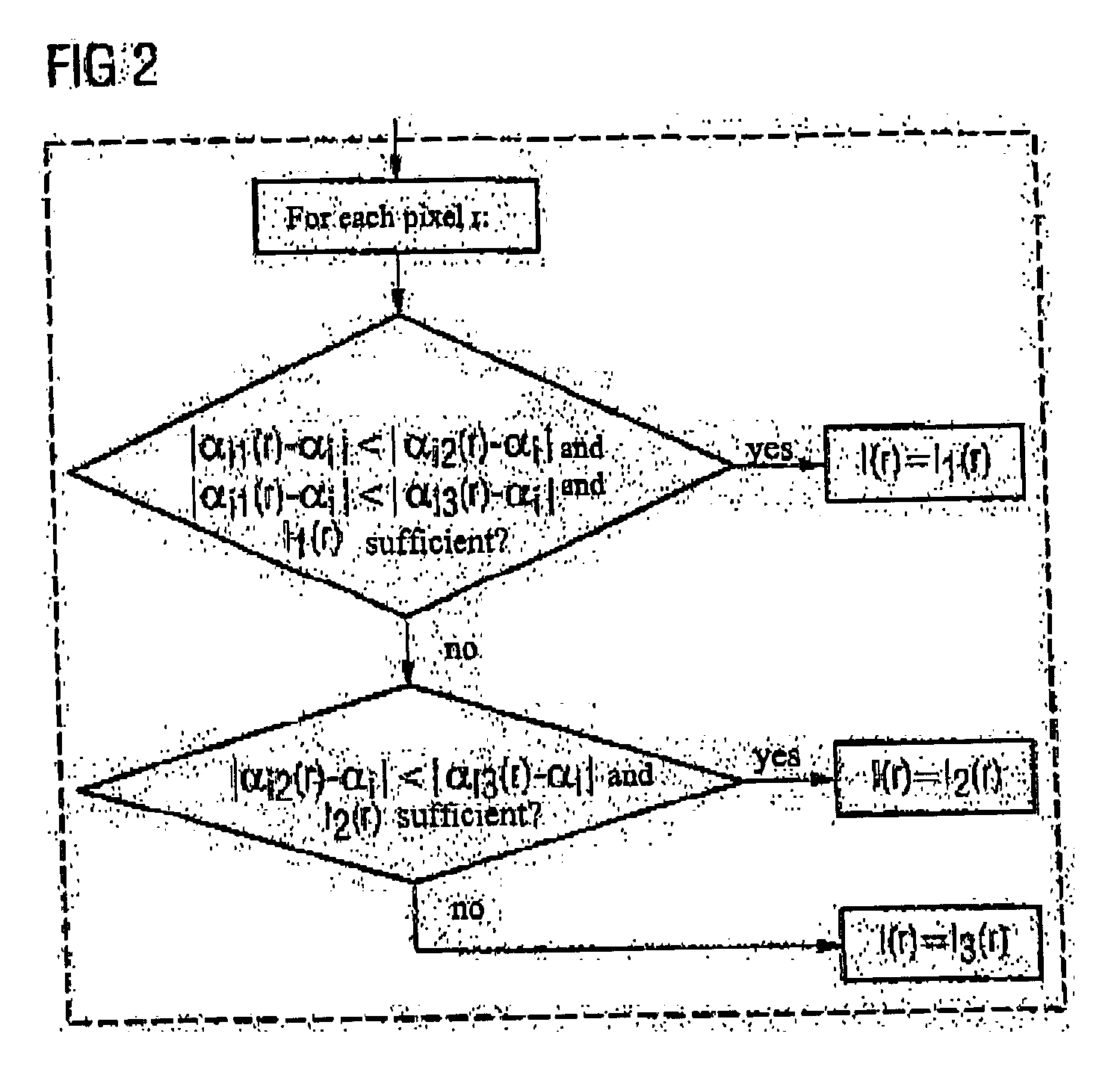Method and magnetic resonance imaging apparatus for compensating contrast inhomogeneities in magnetic resonance images
a magnetic resonance image and contrast inhomogeneity technology, applied in the field of magnetic resonance imaging apparatus for compensating contrast inhomogeneities in magnetic resonance images, can solve the problems of unsatisfactory dependency, unsuitable universal functional configuration, and unsuitable for every body and position, and achieve good compensation for contrast inhomogeneities
- Summary
- Abstract
- Description
- Claims
- Application Information
AI Technical Summary
Benefits of technology
Problems solved by technology
Method used
Image
Examples
Embodiment Construction
[0040] The inventive process is basically exemplified in FIGS. 1 through 5 using flowcharts, where FIG. 1 generally describes the measurement process and FIGS. 2 through 5 respectively show different possibilities for the combination of tho individual images into a common contrast-homogenized image.
[0041] As shown in FIG. 1, before the measurement, an estimated value V0 is determined in a first process step for the radio frequency pulse voltage which will generate an average spin angle βtarget of about 90° with a defined radio frequency pulse in the volume examined. Then a process to be described later will be used to measure the spatial distribution β(r).
[0042] Next, in a second process step, based on the derived voltage V0, a voltage V1 is calculated for the radio frequency pulse of a measurement sequence for the planned examination with N target flip angles αi (i=1 to N). In such a measurement sequence, depending on the task at hand, there are different radio frequency pulses w...
PUM
 Login to View More
Login to View More Abstract
Description
Claims
Application Information
 Login to View More
Login to View More - R&D
- Intellectual Property
- Life Sciences
- Materials
- Tech Scout
- Unparalleled Data Quality
- Higher Quality Content
- 60% Fewer Hallucinations
Browse by: Latest US Patents, China's latest patents, Technical Efficacy Thesaurus, Application Domain, Technology Topic, Popular Technical Reports.
© 2025 PatSnap. All rights reserved.Legal|Privacy policy|Modern Slavery Act Transparency Statement|Sitemap|About US| Contact US: help@patsnap.com



